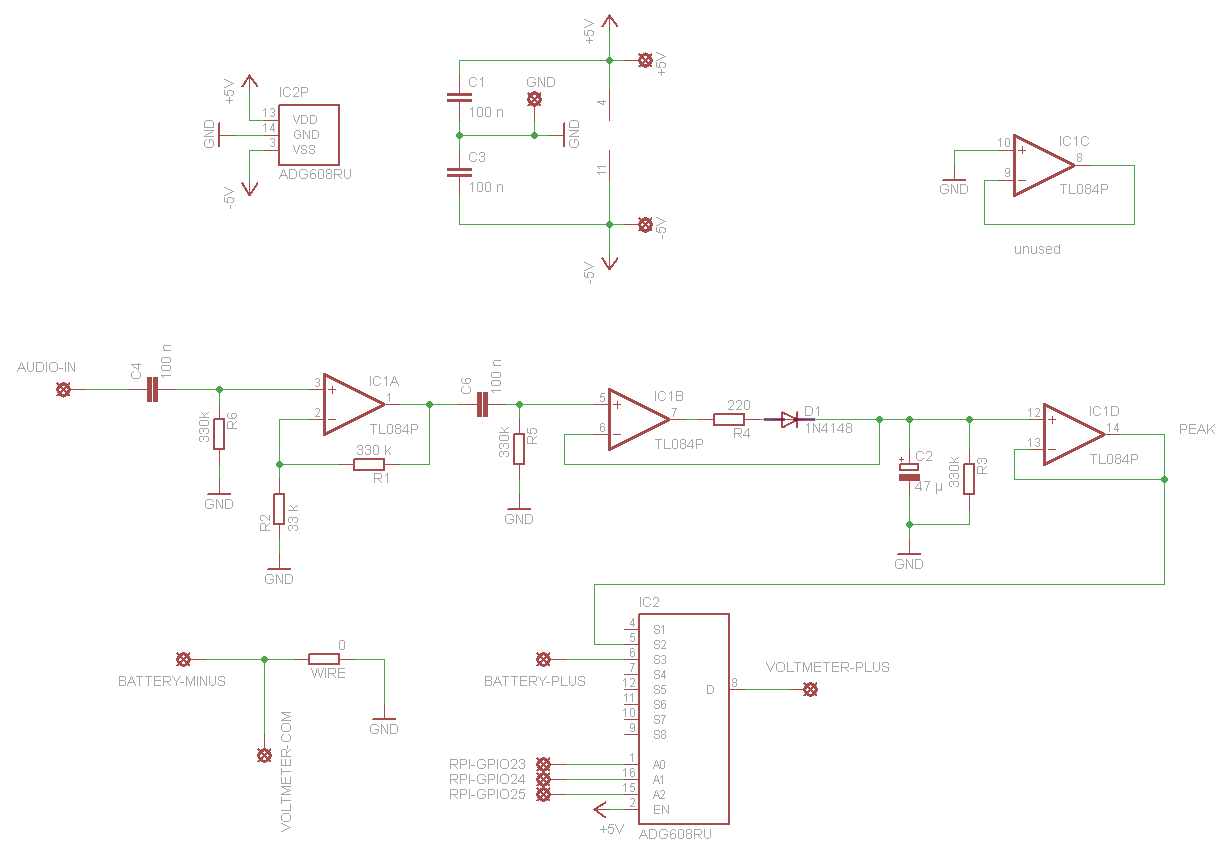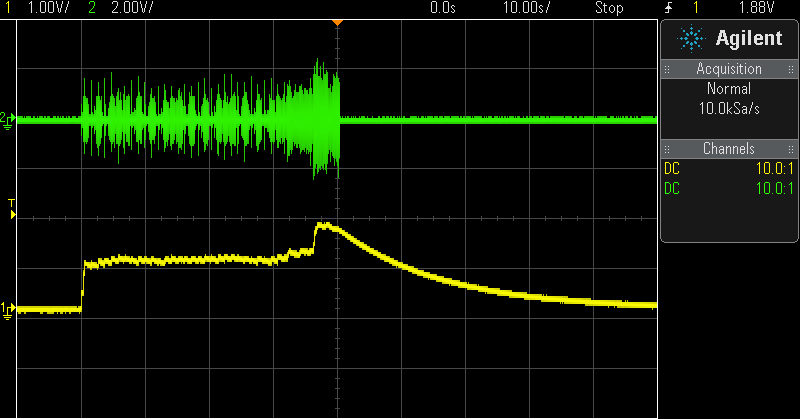I'm preparing the tests, cleaning and ordering the gear on my workbench a bit. And I bought some fresh AAA batteries, from different vendors, because the typical end user test would be important as well. Here is Dave's spreadsheet for entering test results:
https://docs.google.com/spreadsheets/d/18K9c2YAT0d0QABGYGpzItbvDcgfAQCRUtloEzzfXADU/edit?usp=sharing
I think step 2 and 7 combined might mess with the results, the dead batteries regenerate (I understand they don't recharge), even 1 minute of on time with a low load (1-2ma) might give batteriser a lead. I don't think it's fair to wait for them to regenerate.
I don't think this will result in much difference. And it is always good to use best-case scenarios, because if they performs badly even then, you can be sure that Batteroo is not good for the tested product.
To check exactly when the MP3 player I'm using for the first test stops playing, I created a simple peak detector with very slow fallback:

I'm not good with analog electronics, so first I forgot R5 and R6 and the voltage at the plus input was slowly running towards -5 V, but I saw this in the logging and could fix it. This is how the peak output looks like, compared to the amplified input after the first op-amp:
 This
This is the script I'm using to record the data (it is really easy with the RPi_LogNut framework), and
here are the first minutes of the log (both voltages are measured every 10 seconds precisely). As you can see, the peak level slowly faded away, until I hot-fixed it by adding the two resistors

But looks good so far:

The battery voltage is measured with two wires in the battery compartment, between the battery and the contacts. This should not influence Batteroo later in any way. Thanks Dave for your latest video, I might need to replace the ADG608 with an ADG609, so that I can switch two signals. In this setup the battery minus is directly connected to the multimeter minus, but later when I switch to the shunt for the characteristics curve etc., I need to switch both multimeter inputs, to avoid the voltage drop on the wires for higher currents.
I hope logging works for hours, never tried this before. When it is done, the battery will have some time until the Batteroo arrives to regenerate.